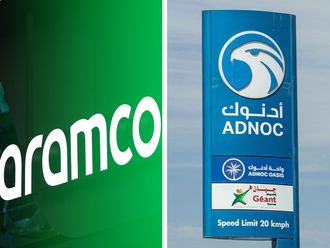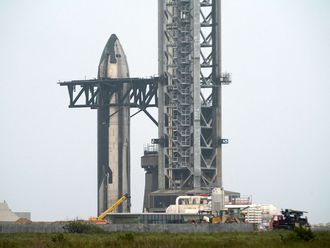Riyadh: Saudi Arabia is wrong to think that US shale production won’t respond to higher oil prices in 2017, according to Goldman Sachs Group Inc.
While crude may rise to over $60 (Dh220.30) a barrel if Opec members and other nations cut production as promised, a rebound in US shale output would bring prices back to $55, the bank’s forecast for the first half of next year, it said in a report. Saudi Energy Minister Khalid Al-Falih said on Saturday he didn’t expect a big supply response from American shale producers in 2017.
With nations including Russia joining an Opec pledge to reduce output, and Saudi Arabia surprising the market by saying it will cut more than previously agreed, analysts say oil may climb to $60 a barrel for the first time in almost a year and a half. But the planned reductions exclude producers such as the US and Canada, which have benefited from a shale boom. The number of active rigs drilling for crude in America has already climbed to the highest since January.
“Greater than expected compliance to the announced cuts, or Saudi’s willingness to cut production further are two upside risks to our forecasts,” analysts including Damien Courvalin and Jeffrey Currie said in a December 11 report. “We disagree however with Saturday’s comment by Saudi’s energy minister that shale would not respond in 2017.”
At the current US horizontal oil-rig count, shale output is already on track to sequentially grow from the first quarter of 2017, according to Goldman. American producers can achieve 800,000 barrels a day of annual production growth at a price of $55 a barrel for benchmark West Texas Intermediate crude, “with limited outspend of cash flow and declining leverage,” the bank said.
WTI crude futures rose 4.5 per cent to $53.84 a barrel on the New York Mercantile Exchange by 9:25am Singapore time. Saudi’s Al-Falih said Saturday the world’s biggest crude exporter will “cut substantially” below the target agreed last month with members of the Organisation of Petroleum Exporting Countries (Opec). His comments followed a deal by non-Opec countries to join forces with the group and trim output by 558,000 barrels a day next year, the first pact between the rivals in 15 years.
Data on Friday showed US explorers rushed back to the shale patch with the largest weekly addition of oil rigs since July 2015. Rigs targeting crude in the US rose by 21 to 498, the most since January, according to Baker Hughes Inc.
The US supply response “and the resumption of Opec and Russia production growth once inventories have normalised will further keep the market balance in 2018, even under our optimistic demand forecast, capping the medium term upside to oil prices,” the analysts wrote in the report. The goal of the planned output cuts is to curb oil inventories rather than higher crude prices, they added.
— Bloomberg












